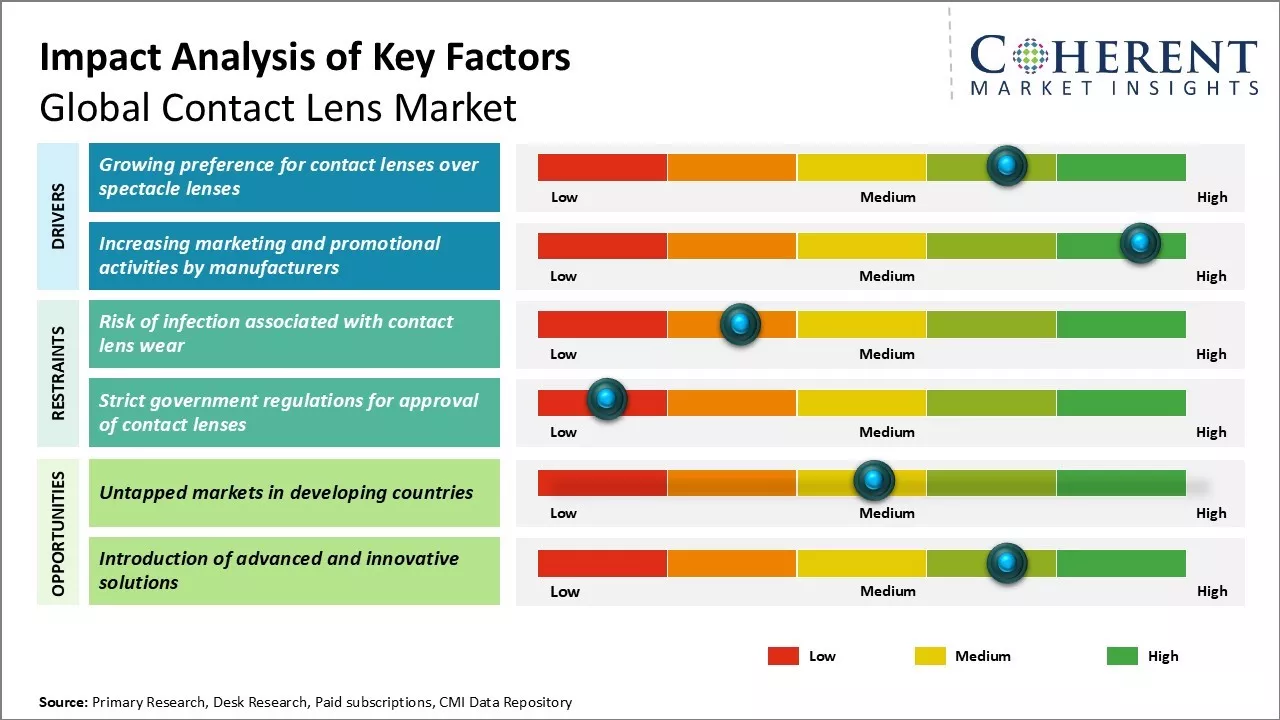The global contact lens market is estimated to be valued at USD 21.26 Bn in 2025 and is expected to reach USD 38.64 Bn by 2032, exhibiting a compound annual growth rate (CAGR) of 8.9% from 2025 to 2032.

To learn more about this report, Request sample copy
The contact lens market has seen steady growth over the past few years driven by the rising prevalence of ocular disorders like myopia and increasing preference for colored contact lenses among youth and millennials for cosmetic purposes.
Market Driver - Growing preference for contact lenses over spectacle lenses
The contact lens industry has witnessed substantial growth over the past few years owing to the growing preference of consumers towards contact lenses over spectacle lenses. Contact lenses are becoming increasingly popular especially among the young population as they allow freedom of movement and enable participation in various activities without difficulty. People find contact lenses more convenient as they do not have to carry spectacle lenses all the time and can forget about them while swimming, playing sports or working out. Contact lenses offer a less inhibited lifestyle as compared to spectacle lenses.
Moreover, advancements in technology have led to the development of convenient materials for contact lenses. The availability of silicone hydrogel contacts lenses that are more breathable and comfortable has further boosted their adoption. Silicone hydrogel lenses allow more oxygen to pass through to the cornea, thereby reducing the risk of eye irritation. They dehydrate less easily and are known to be safer and longer lasting. With the introduction of daily and monthly disposable contact lenses, maintenance has also become simpler. Disposable lenses eliminate the need for cleaning, disinfecting and storage of contact lenses. The hassle-free nature of disposable contact lenses is a major factor behind their rising popularity.
The growing fashion and beauty consciousness among the younger generation has increased the social acceptability of contact lenses. For many people, contact lenses have become a style statement and are seen as enhancer of facial appearance. The ability of contact lenses to change the color of eyes has further augmented their image appeal. Improved aesthetic appeal along with the functional advantages offered by advancements in contact lens materials and care solutions have made them an attractive alternative to spectacles over time. This shifting preference towards contact lenses from spectacle lenses continues to drive their market growth globally.
Joining thousands of companies around the world committed to making the Excellent Business Solutions.
View All Our Clients